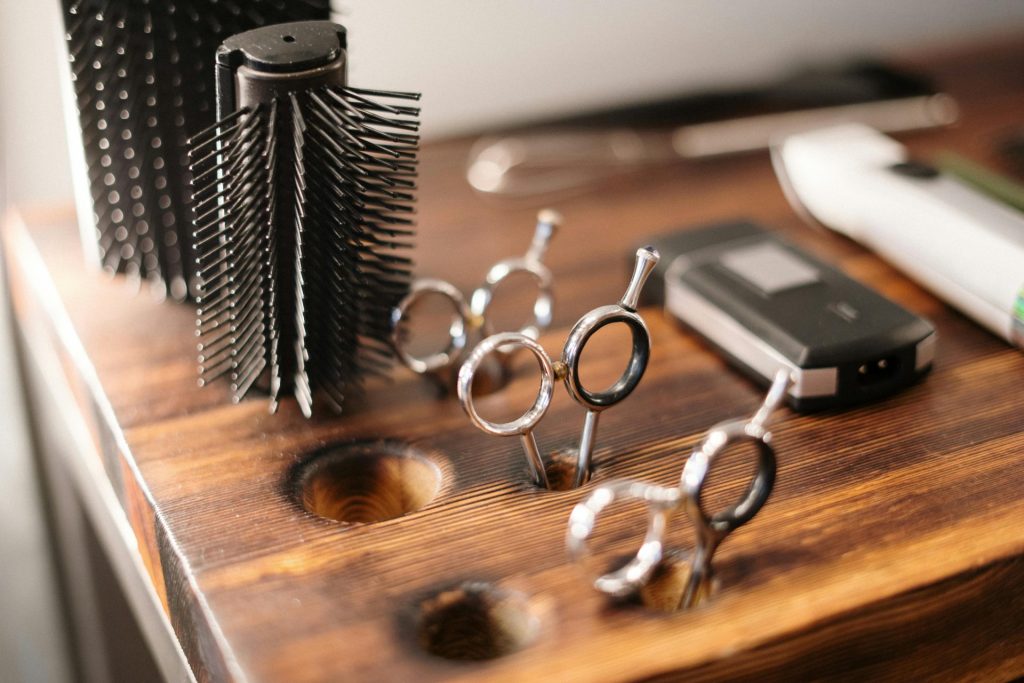If you take care and pride in your appearance, then it’s only natural if that applies to your hair as well. However, hair can seem temperamental, coming up with all sorts of issues for you to deal with, especially when the weather changes or during your travels. Here, we’re going to look at some of the most common haircare problems, and how you can adjust your routine to deal with them more effectively.
Dry Hair
Dry hair is a common problem caused by a variety of factors, including excessive heat styling, chemical treatments, and environmental exposure. To combat dry hair, it’s crucial to focus on hydration and protection. Start by using a sulfate-free shampoo that won’t strip your hair of its natural oils. Follow with a rich, moisturizing conditioner, ensuring it penetrates deeply into the hair shaft. Incorporate weekly deep conditioning treatments or hair masks that contain nourishing ingredients like argan oil, coconut oil, or shea butter. Avoid using hot water when washing your hair, as it can further dry out your strands; instead, opt for lukewarm or cool water.
Split Ends
Split ends occur when the protective outer layer of the hair cuticle wears away due to damage. To prevent and treat split ends, regular trims are essential—every six to eight weeks can help keep your ends healthy. When styling your hair, avoid rough handling and over-brushing, which can cause breakage. Use a wide-tooth comb to gently detangle your hair, starting from the ends and working your way up. Incorporate a leave-in conditioner or serum specifically formulated to smooth the hair cuticle and prevent further damage. Minimizing the use of heat styling tools and chemical treatments will also reduce the occurrence of split ends. Additionally, consider using a silk or satin pillowcase to reduce friction while you sleep, which can help maintain the integrity of your hair ends.
Flat Hair
Flat hair often lacks volume and can be caused by product buildup, fine hair texture, or oily roots. To add volume, start by using a volumizing shampoo and conditioner. These products are designed to lift the hair at the roots and add body. Avoid applying conditioner to your roots; instead, focus on the mid-lengths and ends to prevent weighing down your hair. Blow-drying your hair upside down or using a round brush can create lift at the roots. Dry shampoo is also an effective tool to absorb excess oil and add volume between washes. If your hair is flat and lifeless, using a lightweight mousse or volumizing spray before blow-drying can provide additional body. For a long-term solution, consider getting layers or a textured haircut, which can create the illusion of fuller, more voluminous hair.
Dandruff
Dandruff, characterized by flaky and itchy scalp, can be both embarrassing and uncomfortable. It’s often caused by a dry scalp, sensitivity to hair products, or a yeast-like fungus. To manage dandruff, start with a dandruff-specific shampoo containing active ingredients like zinc pyrithione, selenium sulfide, or ketoconazole, which help reduce yeast and fungus on the scalp. Use this shampoo regularly, ensuring you leave it on your scalp for at least five minutes before rinsing. Avoid using styling products that contain alcohol, as they can dry out your scalp and exacerbate dandruff. Keeping your scalp hydrated with a gentle, moisturizing conditioner can also help. If over-the-counter treatments are not effective, consulting a dermatologist for stronger prescription treatments might be necessary.
Oily Scalp
An oily scalp can make your hair look greasy and unclean, even shortly after washing. This can be due to overactive sebaceous glands, hormonal changes, or improper hair care routines. To manage an oily scalp, use a gentle, clarifying shampoo that removes excess oil without stripping your scalp of its natural moisture. Avoid washing your hair in your bathroom too frequently, as this can cause your scalp to produce even more oil to compensate. When conditioning your hair, apply conditioner only to the ends to prevent adding extra oil to your scalp. Using dry shampoo between washes can help absorb excess oil and keep your hair looking fresh.
Hair Loss
Hair loss can be a distressing issue with many potential causes, including genetics, hormonal imbalances, stress, nutritional deficiencies, and medical conditions. To address hair loss, start by identifying the underlying cause with the help of a healthcare professional. Ensuring a balanced diet rich in vitamins and minerals, particularly biotin, zinc, and iron, can support healthy hair growth. Gentle hair care practices are crucial—avoid tight hairstyles that pull on the hair, limit the use of heat styling tools, and use a soft-bristle brush to minimize breakage. Incorporating scalp massages into your routine can stimulate blood flow to the hair follicles and promote growth. Over-the-counter treatments like minoxidil can be effective for some people, while others may benefit from prescription medications or procedures recommended by a dermatologist.
With the tips above, hopefully, you feel better equipped to care for you hair, whatever issues might affect it in the future.








No Comments